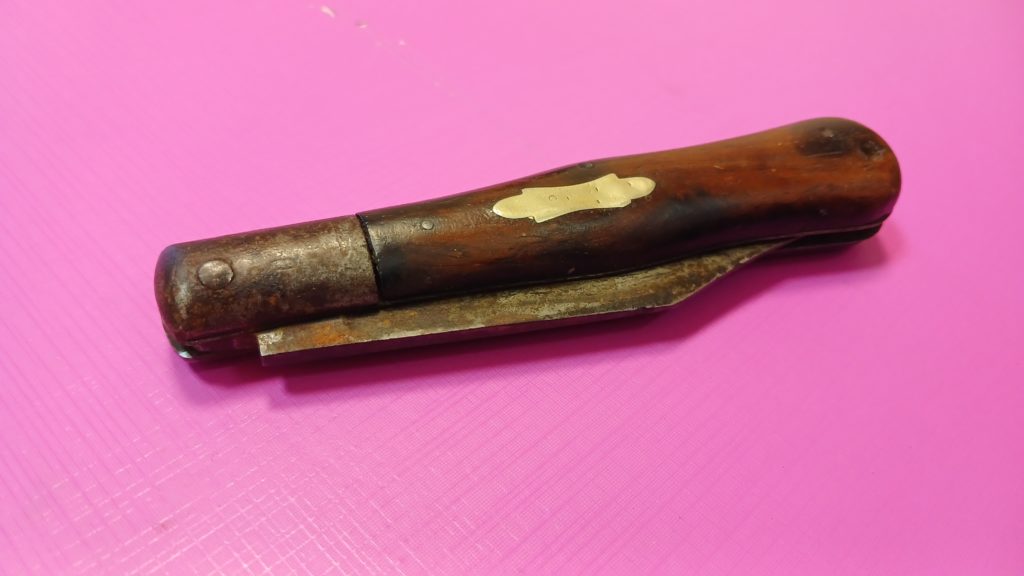February 18th – James Mace’s birthday
“I want to atone for the enormous guilt of the American people towards the Ukrainian people.” These words were said by a prominent researcher of the Holodomor, executive director of the US Congressional Commission on the Study of the Famine in Ukraine of 1932–1933, Professor James Mace (1952–2004).
He was born on February 18, 1952, in Muskogee, Oklahoma, to a Cherokee family. The Holodomor Museum holds a family heirloom, a folding knife. Young James received it from his father, who probably received it from his grandfather.

A knife that belonged to James Mace from the collection of the Holodomor Museum.
The Cherokee were one of the most advanced eastern Indian tribes. In 1835, they were forced to move from North Carolina and Georgia to the centre of the United States, Oklahoma. The researcher recalled that this path was called the “Trail of Tears” because thousands of Indians died from cold, disease, and famine. Probably, the ancestors’ hard experience allowed James Mace to feel deeply the tragedy of the Ukrainian nation, against which the communist regime in Moscow committed the grave crime of genocide.
While studying at the University of Michigan, the scholar began researching the history of Ukraine and defended his dissertation on this theme, which threatened career growth in the conditions of the dominance of Russian-centric Sovietology in the United States. Nevertheless, James Mace was one of the first Western scholars in the early 1980s to qualify the Holodomor as a genocide of Ukrainians, and then helped historian Robert Conquest write a landmark study on the famine in Ukraine in 1932–1933, “The Harvest of Sorrow.”
James Mace played a crucial role in the work of the US Congressional Commission on the Study of the Famine in Ukraine of 1932–1933 as its executive director from 1985 to 1988. The Commission collected documentary materials and hundreds of testimonies of the Holodomor victims and organised public hearings in seven US states, during which witnesses of the crime spoke. The result of the Commission’s work was the publication of three volumes of memoirs and a report on its work. The latter contained an admission, based on an extensive documentary base, that “Joseph Stalin and his entourage committed genocide against Ukrainians in 1932–1933.”
In 1993, the researcher moved to Ukraine. Here, he was engaged in teaching, scientific, journalistic, and public activities and met his love, the poetess Natalia Dziubenko-Mace, who donated her husband’s belongings to the Holodomor Museum in 2022.
James Mace, through his tireless nonconformist work, made a significant contribution to the Holodomor study and the recovery of the memory of the genocide of the Ukrainian people. It was he who initiated the symbolic commemoration of the Holodomor victims every last Saturday of November, “Candle in the Window,” when Ukrainians light candles on their windowsills in memory of their compatriots who died of hunger…
James Mace wrote that moving to our country was caused, in part, by a sense of great shame when he learned that the United States had officially recognised the USSR in 1933, when “millions of Ukrainian farmers were starving before the eyes of the whole world.” I would very much like the United States not to repeat the mistakes of the past during Russia’s latest genocidal war against Ukraine…
Andriy Ivanets, a senior researcher at the National Museum of the Holodomor-Genocide
The author of the portrait of James Mace in the main photo is artist Maryna Sochenko.
